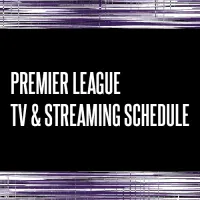
The North American Soccer League (NASL) concluded its fifth season on Nov. 15 with the New York Cosmos’ 3-2 win over the Ottawa Fury in the league’s title game. The title was the Cosmos’ seventh across the league’s two incarnations, with the club currently benefiting from a league model that’s drastically different from Major League Soccer (MLS). NASL’s teams are allowed to spend what they want on players with limited restrictions on contract-length, among other things. While in the past the rhetoric about free markets and unregulated spending by NASL executives were simply theoretical, much of this is now being put into practice by newer clubs with owners that have not been around the North American soccer scene for very long.
What has resulted is a league that has a disproportionate number of players on short-term contracts, as well as a market that has inflated the values of many older journeyman-types who sign on a year-by-year basis with NASL clubs. Though the market dictates prices, the desire of NASL owners to compete is driving a demand that may not be sustainable. It creates an interesting “silly season” for those of us who cover the league, but the system lacks the perspective and controls of the much more centralized MLS model.
This NASL offseason is already rampant with talk about the ambitions of new foreign-owned teams in Miami and Oklahoma City as well as the free-spending Tampa Bay Rowdies, who last season overspent on players and then sacked both the club president and head coach. The Rowdies have reportedly won a bidding war for 28-year-old forward Tom Heinemann, a player who has featured for six different teams over the past six seasons.
SEE MORE: NASL charts new, riskier course with Rayo Vallecano club.
Heinemann’s situation is part of the contrast between the two leagues’ systems. While incentive exists to develop younger players within the highly-structured yet controversial MLS model, which allows teams exemptions for home grown players and those in the Generation Adidas program, NASL’s current model does not incentivize patience around development of younger players. Conversely, MLS’s salary cap and arcane rules about player movement does not necessarily treat players who have been loyal servants well after the age of 28, leaving those players to seek opportunities to move to NASL, if they desire. Given the amount of spending by some clubs in the second-tier league, more movement could happen in the near future.
It is worth noting that every US-based single NASL club has either new or changed ownership since 2012. FC Edmonton, with the same ownership in place since 2011, is the exception. Beyond FCE, every owner is a newer investor in the sport in North America, without the historical knowledge or background that is sometimes required to make judicious decisions. Their decisions to engage in this arms race is especially odd considering the league itself lacks any meaningful sponsorship or television revenue, and there’s no incentive provided by the league for teams to identify and develop the local talent that can offset those costs. In many NASL markets, the lack of a strong link between the pro club and local youth academies leads to its best players to go to MLS or college.
SEE MORE: Ranking the top 20 MLS, NASL and USL expansion cities.
Ironically enough, while many fans of other NASL teams like to blame the New York Cosmos for the rising cost of doing business in the NASL, the Cosmos are one of only a handful of teams that is paying more than lip service to identifying and growing talent in their local market. Other teams have instead opted for a quick road to competing in a league whose winner gets nothing tangible except a shiny trophy and bragging rights for a year.
But then in the MLS model, with the increased number of young players brought into the league at a younger age and the USSF not counting green card holders as foreign players, more and more high-level international players are coming to the league. We’re not that far off from an MLS Best XI without an American-born player. However, the increased standard of MLS also is serving as a magnet to players who, once in the country long enough to attain citizenship, can become US internationals, following the same path taken by Darlington Nagbe of the Portland Timbers.
Since NASL has put a premium on players with experience that have proven a certain value in American soccer, MLS’s increase in foreign internationals and home grown talent may lead to more players in their late 20’s signing in the second-tier league. However, whether this level of spending is sustainable by NASL’s clubs remains a long-term question mark.
Editor’s note: The original version of this story mistakenly stated every NASL club has new or changed ownership since 2012. The author later informed WST editors that FC Edmonton’s ownership dates back to 2011.













